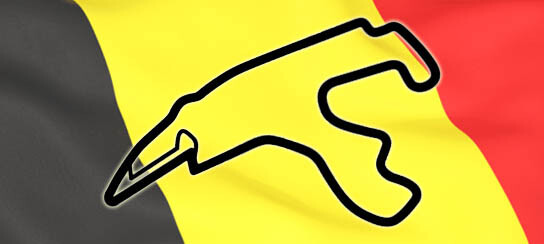BIOGRAPHY
The 8.76-mile Spa-Francorchamps circuit was the quickest of all the classic road circuits and, many would say, the greatest. It swept on public roads through the mountains of the Ardennes in Southern Belgium and even in the dry was a character-building circuit.
In the wet it was only for heroes and since the region is known as 'The Pisspot of Europe' due to its weather, races have frequently been held in the wet. Spa itself is famous for its water and became a generic name for towns which promote their water for its alleged health-giving properties.
Spa was first used for racing in 1924 and the first Belgian GP was run in 1925 when it was won by Antonio Ascari, father of the Double World Champion, Alberto Ascari. It was then used frequently up to WW2 and became a fixture on the WC calendar from 1950.
Serious discontent with Spa began after a downpour in the 1966 race which caused several crashes, most significantly one involving Jackie Stewart which led to his campaign for improved circuit safety. There is no question that Spa was dangerous, but it was magnificent and a win there was a measure of the standard of a driver.
In 1969 the safety of the circuit was challenged by the Grand Prix Drivers' Association and the Belgian GP was not held that year. In 1970, a chicane was added to slow speeds (Pedro Rodriguez still won at 149.94 mph) but for 1972 the Belgian GP was moved to Nivelles.
The memory of Spa would not die, however, and in 1983 there was a new 4.31-mile circuit which incorporated elements of the original, but with an improved surface and run-off areas.
The start/finish line, which was originally on the downhill straight before Eau Rouge, was moved to the straight before the La Source hairpin in 1981. Like its predecessor the new layout still is a fast and hilly ride through the Ardennes where speeds in excess of 205 mph are reached.
The most famous part of the circuit, indeed, one of the most famous parts of any circuit, is Eau Rouge. Having negotiated the La Source hairpin, drivers race down a straight to the point where the track crosses the Eau Rouge stream for the first time, before being launched steeply uphill into a sweeping left-right-left collection of corners with a blind summit. The corner requires a large amount of skill from the driver to negotiate well and the long straight ahead often produces good overtaking opportunities for the best drivers at the following "Les Combes" corner.
"You come into the corner downhill, have a sudden change of direction at the bottom and then go very steep uphill," says Fernando Alonso of Eau Rouge. "From the cockpit, you cannot see the exit and as you come over the crest, you don't know where you will land. It is a crucial corner for the timed lap, and also in the race, because you have a long uphill straight afterwards where you can lose a lot of time if you make a mistake. But it is also an important corner for the driver's feeling. It makes a special impression every lap, because you also have a compression in your body as you go through the bottom of the corner. It is very strange... but good fun as well."
The 'new' Spa is the longest circuit on the F1 calendar and, many believe, the most challenging. It demonstrates the importance of driver skill more than any other in the world. This is largely due to the Eau Rouge and Blanchimont corners, both which need to be taken flat out to achieve a fast run onto the straights after them, which aids a driver in both a fast lap and in overtaking.
Since 2000, Spa has been a closed circuit and a new public road built to keep public traffic off the track.
Since inception, Spa has been famous for its unpredictable weather. Frequently drivers are confronted with one part of the course being clear and bright while another stretch is rainy and slippery. The numerous revisions to the layout have not changed one thing - Spa is still the 'Pisspot of Europe'.
Fast Facts - Provided by the FIA
2018 marked the 63rd running of the Belgian Grand Prix as round of the World Championship. The race featured as a round of the original F1 World Championship in 1950. It was not held in 1957, 1959, 1969, 1971, 2003 and 2006.
Three circuits have hosted the race: Nivelles in 1972 and 1974; Zolder in 1973, 1975-1982 and 1984. The remainder have been held at Spa-Francorchamps.
Michael Schumacher is the most successful driver with six victories and Ferrari are the most successful constructor with 16. They are, however, tied with McLaren on 12 each at Spa.
The Spa-Francorchamps circuit was originally a road course, forming a triangle between Francorchamps, Malmédy and Stavelot. It held its first motorcycle race in 1921 and first car race in 1922. It has been modified many times since, settling roughly on its current layout in 1979, first used by F1 in 1983.
The current track, featuring a new Bus Stop chicane and new pit entry, first appearing in 2007. On this version, the race has been won from pole five times and from no further back than sixth.


